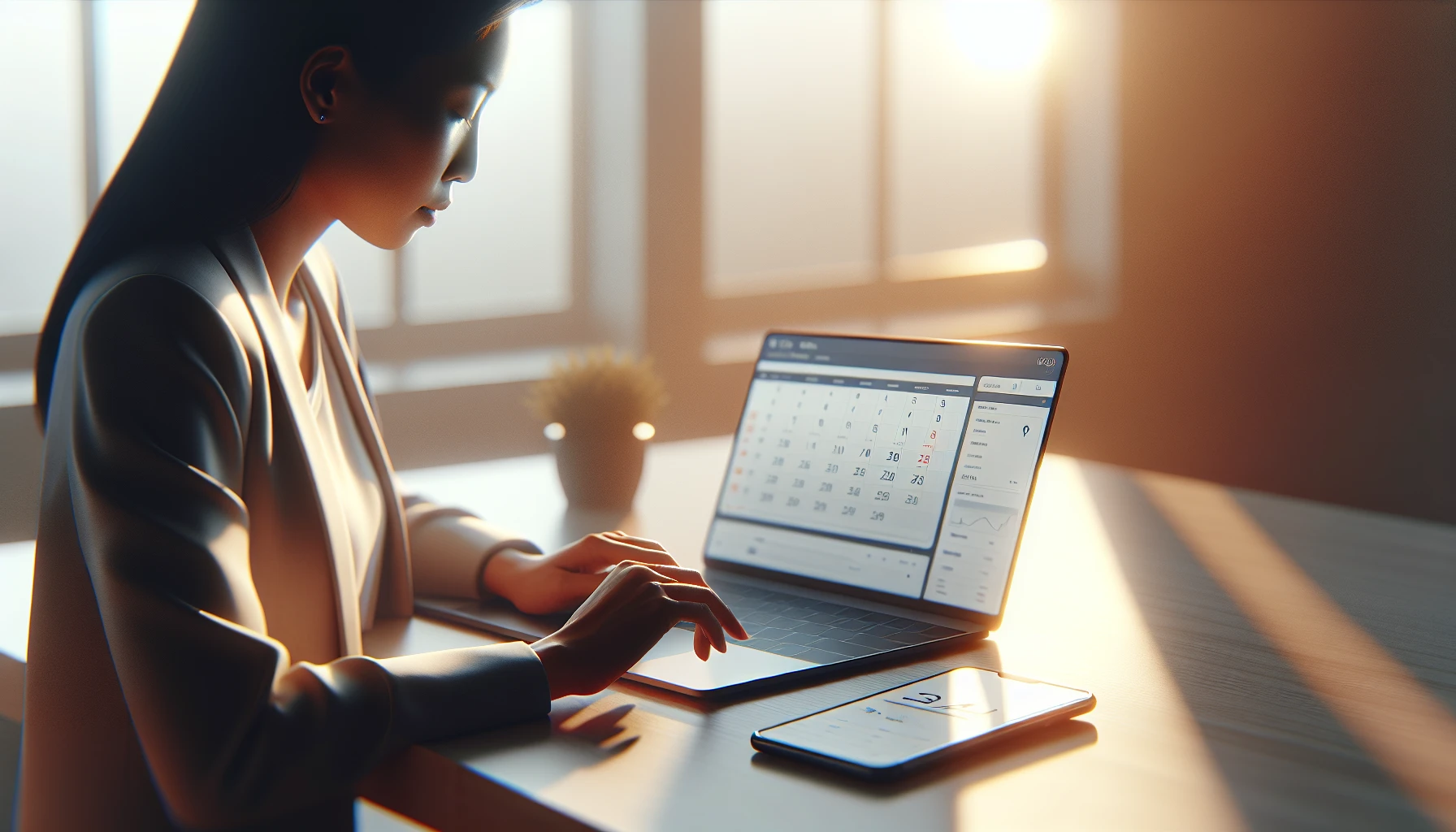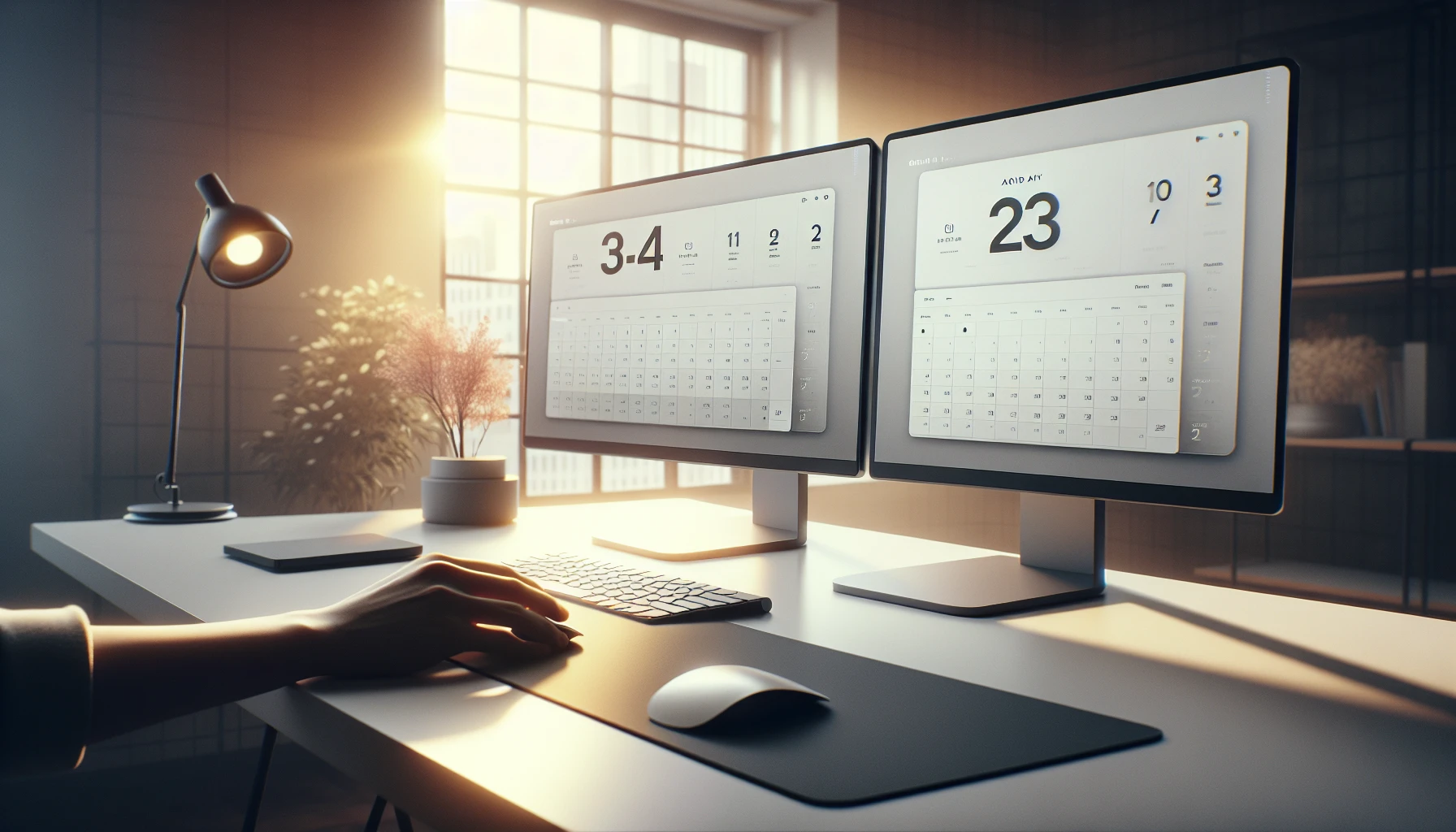· Ricardo Batista · 12 min read
How to set meeting reminders for teams - Stay on Track
Manage meeting reminders on Teams and Outlook, keeping your team on track when days get off-kilter even if things go a bit mixed; never miss key calls.

Teams meeting reminders can help groups stay organized even when things get busy. This article explains easy steps to set alerts for appointments on Microsoft Teams and Outlook using tools like Power Automate and CRM tokens. Expect real-life advice, links to trusted tools and a practical look at various methods to keep your workflow on track.
Key Takeaways
- Meeting reminders help keep meetings on track and ensure everyone shows up on time
- Tools like Microsoft Teams and Outlook make scheduling and reminders super simple
- Automating notifications saves time and reduces stress in daily planning
- Our system can automatically ping the attendees that arrive late to your meetings, showcasing our expertise
- Integrating workflow automation and mobile apps boosts overall team productivity and ease of use
Automatic Meeting Reminders for Teams: Overview
Automatic meeting reminders help ensure that nothing slips through the cracks during your busy day. Whether you’re setting up notifications for team meetings, one-on-one sessions, or even events that include attendees who tend to be late, using tools like Microsoft Teams, Outlook, and Power Automate offers a variety of options. With the right setup, you can automatically ping late attendees, sync board calendars and channels, and personalize notifications with CRM email personalization tokens as discussed on the HubSpot Community Forum.
Automatic reminders reduce miscommunication and keep everyone on track. They let team members know when a meeting is about to start, who is missing, and allow for timely follow-ups if someone is late. Below, you will find a detailed guide on how to set up these reminders using several platforms and tools.
Setting Up Reminders on Microsoft Teams
Microsoft Teams is a hub for collaboration, and setting automatic meeting reminders within it is a great way to ensure punctuality. When you need to ping attendees that arrive late, following a few simple steps can streamline this process.
Configuring Notification Settings
To set up meeting reminders on Microsoft Teams, begin by checking your notification settings:
- Open Microsoft Teams and navigate to your profile settings.
- Look for the Notifications section.
- Adjust settings to include banners and sound alerts for meeting reminders.
- Ensure that channel message notifications are enabled if you use group chat for reminders.
Once the notifications are enabled, configure your teams and channels to receive alerts. For example, if you have a recurring meeting where some team members may log in late, setting up an automatic alert for those individuals is quite beneficial.
Using the Reminders Tab
For those seeking an easy tool to manage notifications, consider using Remind by Moonbear Ventures LLC. With the Reminders tab, you can set both single and recurring reminders. This tool integrates directly with your Teams channel so that when someone logs in late, an automatic ping is sent to them.
- Install the Reminders app from the Microsoft Teams app store.
- Configure the settings to trigger reminders at your defined intervals.
- Use the “@channelname” feature to notify the entire team if needed.
This process ensures that all participants are up-to-date about the meeting start times.
Outlook and Power Automate Integration
Outlook remains a central hub for calendar management, and integrating it with Microsoft Teams helps extend the convenience of automated meeting alerts. Using Power Automate further refines these workflows.
Setting Up Reminders in Outlook
To ensure your Outlook calendar works seamlessly with automatic meeting reminders, follow these steps:
- Open Outlook and navigate to your calendar.
- Create a recurring event for your regular meetings.
- Add a description that includes a note for late attendees.
- Use calendar invitation options to send automatic reminders before the meeting starts.
Customize these reminders by adding personalized messages. This can be particularly handy if you wish to include information that is specific to a meeting, such as agenda items or last-minute detail updates.
Automating with Power Automate
Power Automate is a flexible tool that allows you to connect various Microsoft 365 services for tailored workflows. Here’s a simple workflow for setting up automatic reminders:
Creating the Workflow
- Log in to Power Automate.
- Select “Create” to start a new flow.
- Choose a trigger such as “When a new event is added” in your Outlook calendar.
- Add an action to send a message in Teams. Configure it to ping attendees or the whole channel if someone is late.
- Customize the message with dynamic content. You can use CRM email personalization tokens to ensure the message is personalized.
Tips for Effective Automation
- Test the workflow with a small meeting before rolling it out to all teams.
- Adjust time delays for reminders so that messages aren’t sent too early or too late.
- Consult guides from experts like Tom Mitchell and feedback from community forums to refine your automation process.
This integration between Outlook and Power Automate not only sends reminders but also syncs calendars across different devices, ensuring that both desktop and mobile users remain in the loop.
Integration Strategies with Mobile and Desktop Tools
In today’s connected world, having consistency across mobile and desktop environments is vital. Whether your team members are using smartphones or laptops, automatic reminders can be set up to work across all platforms.
Mobile Tools for Meeting Reminders
Many team members rely on mobile notifications to keep track of their schedule. Here’s how you can extend reminders to mobile devices:
- Enable mobile notifications on Microsoft Teams by checking the mobile app settings.
- Use Outlook mobile app to receive calendar alerts. Adjust notification preferences to make sure reminders are visible even when the app is not open.
- For Android and iOS users, customize the synchronization settings so that reminders pop up on your lock screen at designated times.
By integrating mobile tools, you ensure that remote workers or those frequently on the go do not miss important meeting alerts.
Desktop Configurations
Desktop users can also set up reminders in a way that minimizes distractions yet keeps them informed:
- Configure dual monitors so that one screen displays your calendar at all times.
- Use widgets or sidebar integrations for Microsoft Teams and Outlook on your desktop.
- Adjust your notification settings to be less intrusive during focus time but impactful enough to draw attention to an imminent meeting.
These adjustments help balance productivity with effective communication.
Step-by-Step Guide for Automatic Reminders
Setting up automatic meeting reminders for teams doesn’t need to be complex. Below is a detailed step-by-step process you can follow to ensure no one misses a meeting, especially when they arrive late.
Step 1: Prepare Your Calendar and Communication Channels
- Verify that your Microsoft Teams and Outlook accounts are linked.
- Confirm that your team’s calendar is shared among relevant members.
- Decide on the meeting frequency and whether you need single or recurring reminders.
Step 2: Configure Microsoft Teams Notification Settings
- Access the Notifications section within Microsoft Teams.
- Enable options for both banner and sound alerts.
- Set up channel notifications for every meeting reminder.
Step 3: Use Workflow Automation via Power Automate
- Log into Power Automate and select a new flow.
- Choose Outlook’s calendar event as your trigger.
- Add a Teams action to send a reminder message, using personalization tokens if desired.
- Test the flow with a short meeting to verify that reminders are working correctly.
Step 4: Incorporate CRM Personalization
- Use CRM email personalization tokens to add a custom touch to the reminder messages.
- Insert dynamic placeholders such as attendee names and meeting details.
- This helps ensure that the message feels personalized and relevant.
Step 5: Set Up Reminders on Mobile and Desktop
- Adjust settings on your mobile device to sync with Microsoft Teams and Outlook.
- For desktop users, configure notifications to display clearly without interrupting your workflow.
- Ensure reminders for both environments are set to trigger at the appropriate times.
Following these steps will help streamline your reminder system and enhance team collaboration. With the right mix of settings in Teams, Outlook, and Power Automate, even those who frequently run late will receive timely nudges.
Tips and Customization for Personalized Notifications
Personalizing notifications is key to making automatic reminders effective while also improving team communication. Using simple strategies can ensure your reminders are both friendly and professional.
Using Group Alerts Effectively
- Use the “@channelname” feature wisely. It’s best to ping the whole group only if the meeting is critical.
- Avoid over-notification; tailor the message to the situation.
For example, in meetings where a small group consistently arrives late, sending a targeted reminder may be more helpful than alerting everyone.
Custom Alerts in Outlook and Teams
- Customize your Outlook reminder messages with notes and dynamic content to provide context.
- In Teams, make use of custom emoji or tag highlights to draw attention to the reminder.
- Experiment with different wording to see what grabs your team’s attention most effectively.
Leverage External Resources
For more detailed guidance on personalization and workflow automation, explore additional resources like Power Automate’s help section and community forums. There you will find templates and insights that can be adapted to your specific needs. Check out resources such as Meeting Reminders For Teams for detailed technical guidance on automating reminders. Also, read our guide on staff meeting reminder strategies.
Troubleshooting Your Notification Settings
Even with a well-laid plan, you might run into some issues with notifications not working as expected. Here are some common troubleshooting steps:
- Verify that all integrations between Microsoft Teams, Outlook, and Power Automate are active.
- Review your permission settings on both desktop and mobile apps to ensure notifications can be delivered.
- Revisit the notification configuration settings if reminders are delayed or missed entirely.
- Check for updates in Teams, Outlook, and Power Automate regularly as bugs or updates can affect functionality.
If issues persist, consulting the Microsoft Teams Documentation or the Microsoft 365 Community can help uncover common pitfalls and fixes.
Enhancing Collaboration through Timely Reminders
At its core, setting up automatic meeting reminders isn’t just about remembering a meeting—it’s about enhancing how a team collaborates. When reminders are sent punctually, teams can avoid the backlog of missed information and wasted minutes catching up.
Best Practices for Maintaining Momentum
- Keep reminder messages concise and focused.
- Avoid flooding team channels with too many notifications.
- Regularly adjust your settings based on team feedback.
By establishing clear expectations and communication norms, automatic reminders can improve not just punctuality, but overall efficiency and team morale. Using tools from Microsoft’s ecosystem makes it easier to integrate these improvements into your daily workflow.
Implementing Continuous Improvement
- Periodically review your reminder settings and adjust for any changes in team schedules.
- Encourage team members to share their experiences with the reminder system.
- Experiment with different notification timings and message formats to optimize engagement.
A few thoughtful tweaks here and there can lead to a much smoother meeting experience, where even late arrivals are gently nudged without causing disruption.
Automatic reminders, when done right, foster an environment where every participant understands the rhythm of meetings and the importance of timely contributions. With tools like Microsoft Teams, Outlook, and Power Automate working together, you’ll have a system in place that keeps everyone better connected.
By following these guidelines and experimenting with personalized settings, you ensure that your meeting reminders work as a trustworthy tool for the team. This leads to less downtime, improved responsiveness, and a culture where punctuality becomes the norm rather than the exception.
Conclusion
In this article we quickly looked over ways to keep your meetings on track with automatic meeting reminders. We walked through a couple of key methods and tools designed to help you manage appointments better, and showed how using Teams and Outlook can really simplify your daily tasks. One important point is that setting up these reminders doesn’t require any fancy skills – it is all about taking small, manageable steps. Another takeaway is that a mix of tools like Power Automate and CRM email tokens can really enhance your day even if it feels a bit scattered sometimes. It all boils down to making sure everyone is kept in the loop, especially when someone shows up late. Our team at Meeting Reminders has deep expertise in automatically pinging attendees who are late to your meetings, showcasing our Punctuality Assistant. If you are looking to simplify your meeting management, take a few minutes to explore our service and see how the right reminders can make a big difference. Try it out and give it a go as your next step to a more organised day.
Related Posts
Frequently Asked Questions (FAQs)
How do teams meeting reminders help organize my schedule?
They help you keep track of your meetings and tasks by sending alerts ahead of time so you dont miss anything. It’s like having a buddy remind you about your appointments, making your day a bit smoother and more organized.
Can I set up teams meeting reminders on both mobile and desktop?
Yes, you can set up reminders on your mobile and desktop. Most meeting reminder tools work across devices so you get the notifications wherever you are. This way you stay on track even if you’re on the go.
What tools do I need to schedule teams meeting reminders?
You dont really need anything fancy. Many people use built-in options on platforms like Microsoft Teams and Outlook, or even services like Power Automate to subtly set up reminders. It’s simple, and these tools often do the job for you.
How can I automatically ping attendees who are late to my meetings?
Our service excels in automatically pinging the attendees that arrive late to your meetings. With teams meeting reminders, you can automatically notify latecomers with a simple setup. This keeps everyone aware and the meeting running smoothly without manual interventions every time someone gets held up.
Are teams meeting reminders customizable?
Yeah, you can customize them pretty well. Whether its adjusting times or adding personal messages, many tools let you tweak reminders so they suit your needs. This means you can be as basic or as specific as you like with how and when the alerts show up.



